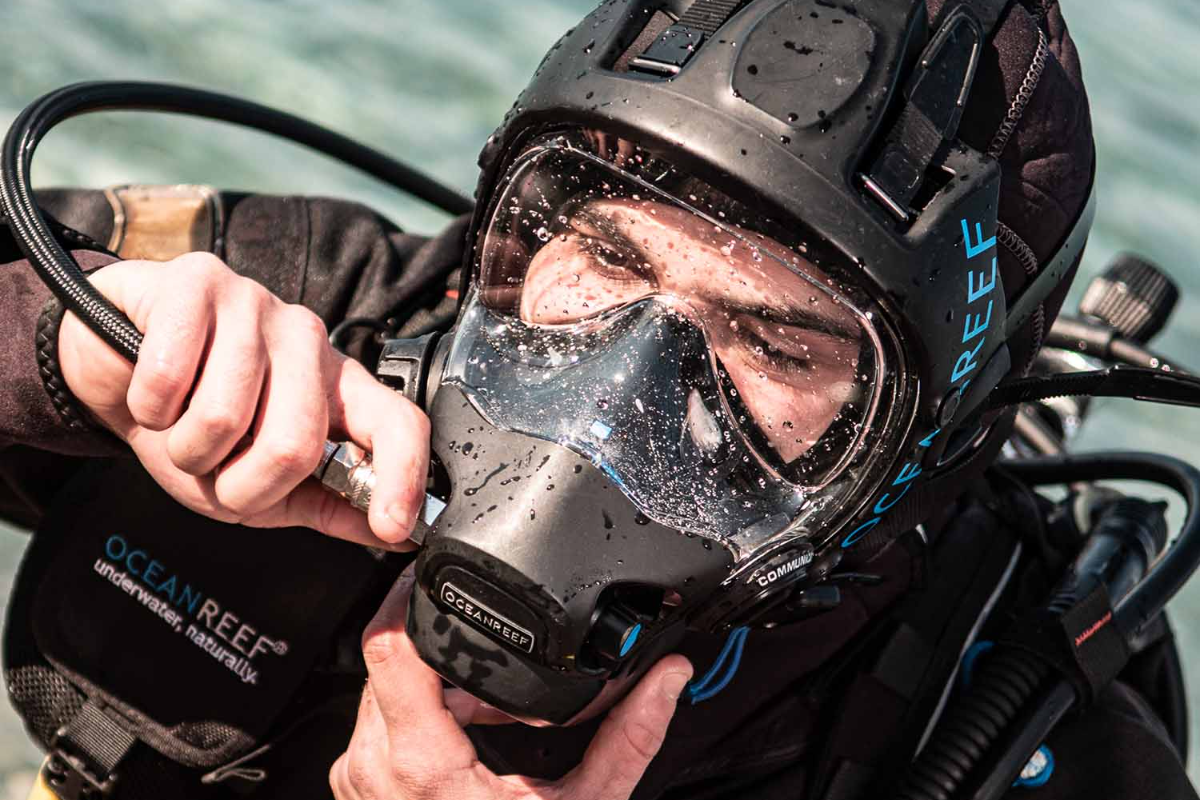Preparing Tomorrow’s Warriors for the Fight Beneath the Waves

The ocean isn’t a playground—it’s a proving ground. Every mission below the surface demands clarity, control, and discipline. For divers, whether training for elite pipelines, conducting rescue operations, or pushing endurance limits, vision is survival. Your mask isn’t just a window to the underwater world—it’s your primary interface with the environment.
A fogged, leaky, or ill-fitting mask isn’t a small inconvenience. It’s a liability. That’s why choosing the right mask and maintaining it properly is just as critical as selecting the right fins, wetsuit, or breathing apparatus. In this field manual, we break down everything you need to know about choosing and caring for your dive mask with the same attention to detail you’d expect in mission prep.
Why the Right Mask Matters

1. Operational Safety
A dependable mask keeps water where it belongs—outside. Every second you spend adjusting or clearing a leaking mask is a second you’re not focused on your objective. A poor seal isn’t just frustrating—it can compromise awareness in fast-changing conditions.
2. Clarity & Vision
Masks create an airspace in front of your eyes, restoring normal vision underwater. Without it, the world is blurry, distorted, and dangerous. Clear lenses and a snug fit ensure you can read hand signals, track your team, and monitor threats in your periphery.
3. Comfort Over Distance
An ill-fitting mask digs into your face, creates hot spots, or constantly requires clearing. Over time, those micro-distractions eat into your endurance and focus. Elite divers know—comfort under pressure is an edge.
4. Equalization Capability
Covering the nose allows divers to equalize sinus pressure by exhaling gently while pinching. Skip this step and you risk discomfort or even sinus and ear barotrauma. A mask that allows easy equalization isn’t optional—it’s critical.
Bottom line: the right mask protects your mission, your performance, and your safety.
The Four Main Types of Dive Masks

Single Lens Masks – Wide Vision for Situational Awareness
A single uninterrupted pane of tempered glass covers both eyes, maximizing forward vision.
-
Pros: Wide panoramic views, fewer edges to fog, ideal for open-water scouting.
-
Cons: Larger internal air volume = more effort to equalize at depth.
Mission Use: Perfect for divers prioritizing panoramic situational awareness, such as reconnaissance and open-water training.

Double Lens Masks – The Workhorse of Tactical Diving
Two lenses divided by a central bridge. The most common mask in both military and recreational diving.
-
Pros: Lower internal volume = easier equalization, supports prescription lenses, compact fit.
-
Cons: Central frame can slightly disrupt vision field.
Mission Use: The standard. Balanced, versatile, and dependable for endurance dives, pipeline training, and combat swimmer operations.
Tri-Lens Masks – Expanding Your Field of View
A central pane with side windows for peripheral vision.
-
Pros: Expands lateral awareness, reduces claustrophobic feel.
-
Cons: Lens intersections can create mild blind spots.
Mission Use: Situational diving where scanning flanks matters. Great for rescue or high-awareness environments.

Full-Face Masks – Advanced Gear for Advanced Missions
Covers the entire face, integrating both mask and regulator. Often includes comms.
-
Pros: Normal breathing, no jaw fatigue, comms integration, 180-degree vision.
-
Cons: Bulkier, harder to clear, higher buoyancy, specialized training required.
Mission Use: Commercial, technical, and professional operations. Used by deep-sea divers, underwater welders, and special operations units requiring communications.
Key Features to Consider When Choosing a Mask
-
Silicone Skirt
-
Look for high-grade silicone.
-
Black = reduced glare, tactical stealth.
-
Clear = more light, airy feel.
-
Soft, flexible silicone ensures a reliable seal under stress.
-
-
Frame vs. Frameless
-
Framed: Modular, replaceable parts. Longer life cycle.
-
Frameless: Sleek, closer fit, lighter profile, wider FOV.
-
-
Lens Material
-
Always tempered glass. Anything else is a hazard.
-
UV-coated lenses = extra eye protection in bright/tropical environments.
-
-
Adjustable Straps
-
Micro-adjustments prevent slipping or over-tightening.
-
A solid strap system is the difference between all-day comfort and distraction.
-
-
Low Volume Design
-
Reduces effort required to equalize.
-
Clears faster after flooding.
-
Ideal for freedivers, tactical swimmers, or anyone operating at depth.
-
Tip: The best mask is the one that seals to your face without a strap. Always test fit before mission deployment.
Mask Care and Maintenance
Like any piece of kit, your mask won’t last long if neglected. Treat it like your weapon—maintain it religiously.
-
Rinse Immediately After Use – Salt and chlorine degrade silicone and lenses. Always rinse in fresh water.
-
Avoid Direct Sunlight – Heat and UV can warp or discolor silicone. Keep your mask stowed properly (Ours are typically designed to better handle the elements than other commercially available dive masks.)
-
Inspect Regularly – Check seals, straps, and lenses for cracks or warping. Small issues can become mission-stopping failures.
-
Defog Before Every Operation – Use anti-fog sprays, gels, or solutions. Fog is the silent saboteur of situational awareness. We provide anti-fog film for this very reason.
-
Store Correctly – Keep in a protective case, away from sharp edges or weight pressure.
The ATACLETE Standard
ATACLETE masks are designed for warriors. Built to endure pipeline training, long cold-water ops, and relentless mission demands, our gear delivers clarity when the ocean turns chaotic.
-
Harambe Mask – Frameless, panoramic, uncompromising.

-
BUD/s Mask – Tactical precision, low-volume design, prescription-ready.

-
Bermuda Mask – Purpose-built for candidates pushing attrition rates.

Every mask is tested for fit, resilience, and field conditions. When your mission is measured in heartbeats and lungfuls of air, second-rate gear is not an option.
Final Word: Clarity Wins Fights
A dive mask isn’t just a piece of equipment—it’s your eyes in the fight. The wrong choice leads to distraction, discomfort, and danger. The right choice sharpens your focus, extends your endurance, and helps you dominate the underwater battlespace.
The ocean is unforgiving. Your mask shouldn’t be.
Train hard. Gear up. See clearly. ATACLETE.




